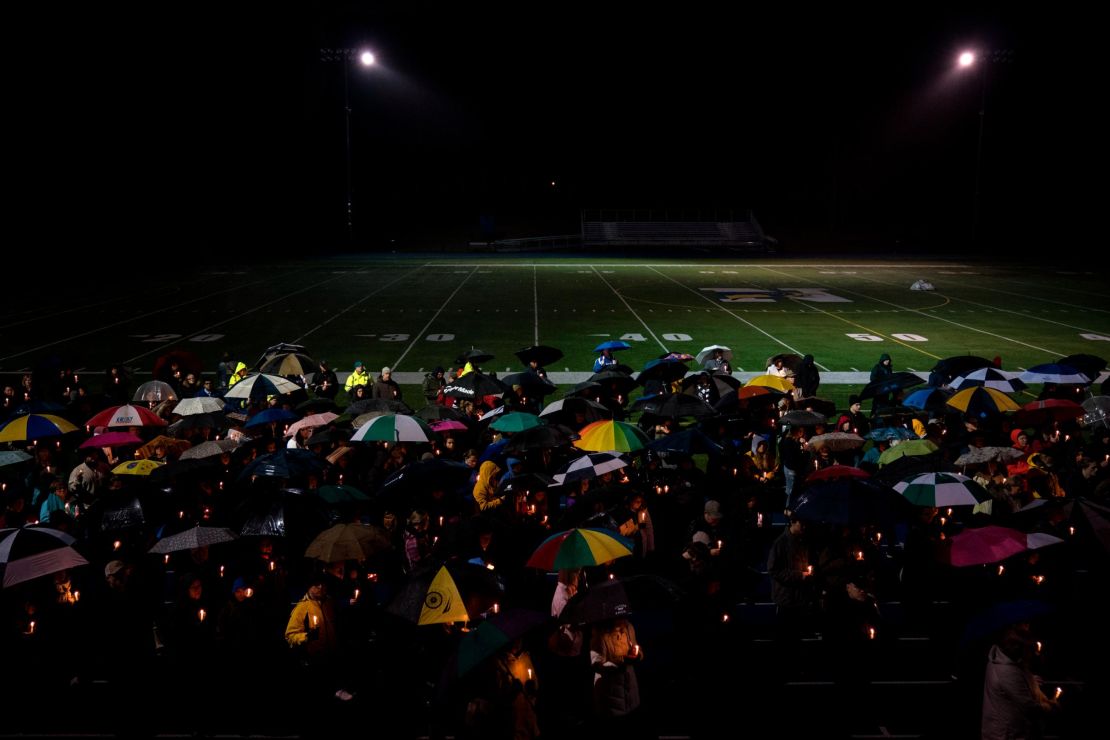Editor’s Note: Richard Morgan is a freelance writer in New York and the author of “Born in Bedlam.” He has written for many publications including The Economist, The New Yorker, The New York Times, NPR, Rolling Stone, The Wall Street Journal and The Washington Post. The views expressed in this commentary are the author’s. Read more opinion on CNN.
Since the Valentine’s Day shooting at Marjory Stoneman Douglas High School in Parkland, Florida, in 2018, more than 1,200 other children have died in the US because of gun violence, according to the Miami Herald’s Since Parkland project.

Memorial Day is dedicated to those soldiers who have died to protect our way of life. How do we also find an occasion to honor our forgotten fallen – the appalling number of children who have died and continue to die because of our way of life?
Memorial Day began informally after the Civil War but was not formalized as a federal holiday until 1971. It’s a day for visiting grave sites. In American life, schools are becoming cemeteries in waiting. There is no Tomb of the Unknown Child. Every parent knows. But they also know their kids’ school could be next.
Children in Pre-K practice protocols for shooting events, learning to dodge bullets before many of them learn to read or count. Since Parkland, there has been a school shooting, on average, every 12 days in the US. What was unthinkable when it happened at Columbine High School in 1999 is now all too familiar. Even forgettable.
All the bulletproof backpacks, bulletproof classroom shelters and armed guards don’t seem to stem the larger tide of violence.
School shooters are the terrorists we don’t fight because, in America, even bigots have militia rights and, although too many of us don’t apply the founders’ decree that we are all created equal to race or sexuality or gender identity, our government does interpret it to mean that even craven killers are due their Second Amendment rights and an inalienable right to the pursuit of happiness.
Of the 1,200 dead children in the last year, more than 80 were toddlers or infants, some as young as 1 (RIP Malaysia Amori Robson Dew, who died sleeping on a couch as two men shot multiple bullets into her home because of a social media feud, investigators say). But that was just last year, for the most part. Maybe 2018 was an especially bad year.
It wasn’t.
In December, a University of Michigan study published in the New England Journal of Medicine found that, of the 20,360 child deaths in the US in 2016, 3,143 – 15% – were caused by gun violence. The only bigger culprit was motor-vehicle-related death.
While 126 of those deaths were accidental and 1,102 were suicides, mostly the children were murdered in 1,865 deaths ruled as homicides. The study determined that the deaths constituted a 28% increase since 2013, with gun homicide increasing by 32% and gun suicide increasing by 26%. The study also determined that the US is a global leader in gun-related child deaths, with a rate 36.5 times that of those in a dozen comparable high-income countries. Literally #1 with a bullet.
In an average year – one recoils at the word “normal,” although that also is the case – about 1,300 children die of gunfire and another 5,790 survive gunshot wounds in the US, according to a recent study in the journal Pediatrics. Read that again: America is a place where gunshot wounds are analyzed in a pediatrics journal. Roughly 19 children a day either die or are treated in emergency rooms because of gun violence. That’s an entire classroom.

In these shootings, the bullets are often traveling at such high speed from semiautomatic weapons – 3,251 feet per second from an AR-15 – that they cause actual shockwaves when they enter the body, doing even more internal damage.
Since 9/11, the US has spent $6 trillion on wars that have killed nearly 500,000. That’s roughly $12 million per death. That is the price – a literal price, not a metaphoric one – that we are willing to pay collectively as a nation to smite our perceived enemies (although it includes military fatalities, too).
The future of any child you see, even your own, is worth far less in the government’s eyes than that. A June 2018 analysis by Governing found that, on average, state spending on schoolchildren is $11,762 – less than the price of a new Nissan Versa, America’s cheapest car in 2019. We send our kids into the battlefield of school with less than our thoughts and our prayers.
The unceasing deaths of the Vietnam War, which turned local newspapers’ obituaries into virtual yearbooks of young dead, compelled American powers that be to halt the draft, the randomized conscription that sent young men to war regardless of whether they were rock stars, professional athletes or wealthy heirs. Such egalitarian roulette is unthinkable in our current culture.
Jimmy Carter, whose daughter attended DC public schools while her father was in the White House, once warned, of war: “We will not learn how to live together in peace by killing each other’s children.” Until we disarm our arsenal of pro-gun laws, our endless other civil war rages on, the one that pits gun supporters against gun control advocates (and, yes, gun abolitionists).
Perhaps the parents of Sandy Hook, the tragedy in which an angry 20-year-old slaughtered 26 people in minutes, bringing President Obama to tears even years later, will be successful in their groundbreaking lawsuit against Remington, the manufacturer of the Bushmaster’s version of the AR-15 rifle used during the massacre.
One of Remington’s attorneys, after acknowledging the tragedy, argued in court that the law protects the company from such lawsuits: “Under the law…the manufacturer and the sellers of the firearm used by the criminal that day are not legally responsible for his crimes and the harm he caused.” The case is on its way to the Supreme Court. Have we become a country whose moral victories only play out in lawsuits?
Luckily, this Memorial Day, we have advocates leading the movement for our fallen children. Not parents. Not teachers. Not police. Not politicians. Not doctors or lawyers. The adults, even those who have tried, have failed to make systemic change.
What we have now are the kids whose movement continues to grow. We have the 200 writers of the 1,200 memorials in the Since Parkland project – children themselves, aged 13 to 19, teen reporters from across the country who are working with the Miami Herald and McClatchy and writing about gun violence with all the normalcy of a book report. They memorialized what too many adults ignored.
Our prayer should be that these students succeed in schooling us.





